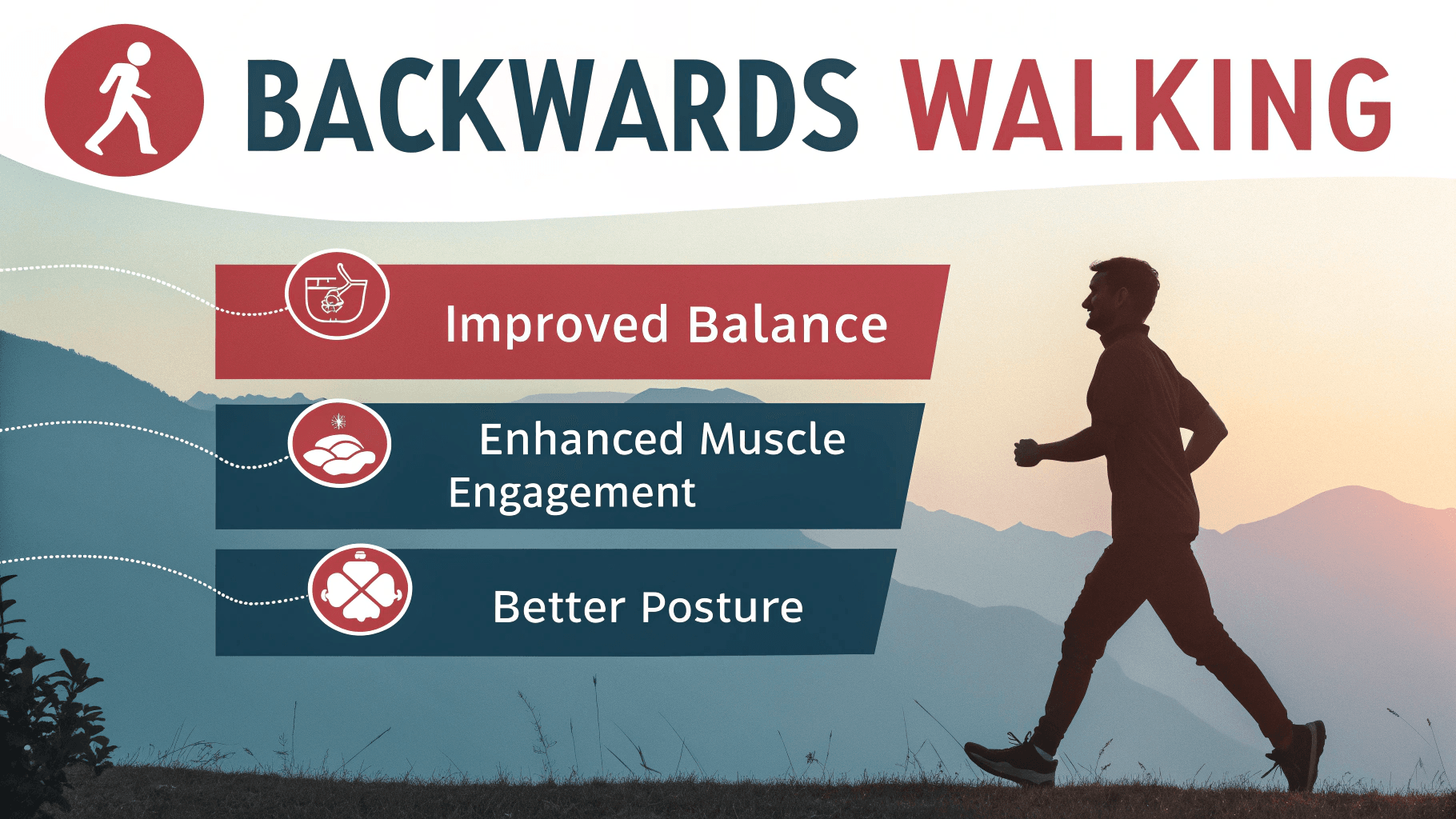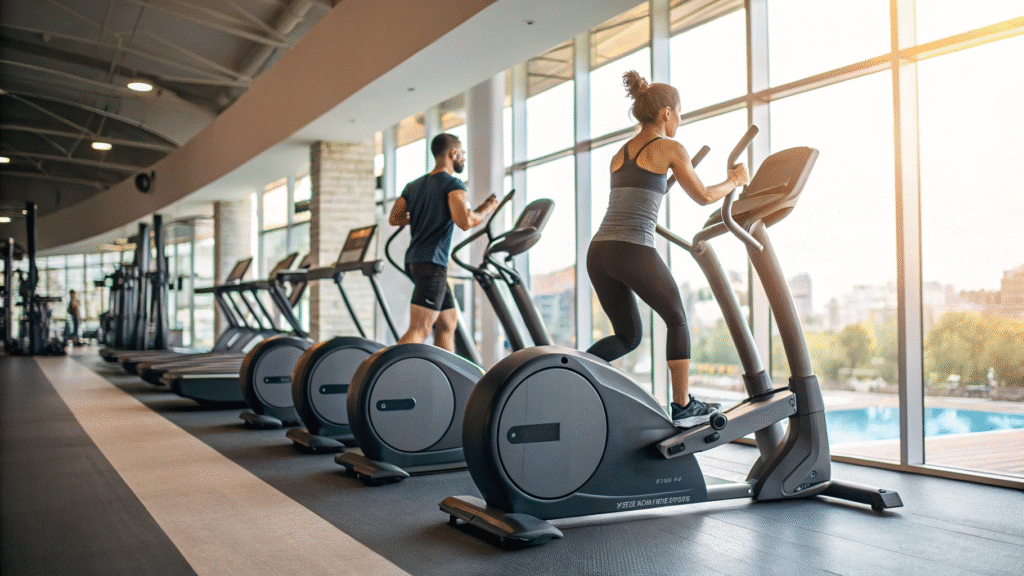Do you often take a few steps backward? The question may seem incongruous. However, walking backward, or “retro walking,” has certain advantages—known as backwards walking benefits —provided you know where you’re putting your feet. Explanations and advice from a sports coach who teaches Adapted Physical Activities.

For heart, lung, bone, and joint health… We all know the stimulating benefits of walking, a gentle and universal aerobic activity that is essential for staying in shape and aging well.
But walking backwards may also have benefits, according to several studies on the subject. For example, a study published in 2019 in BMC Musculoskeletal Disorders showed that participants who walked backward for 10 to 15 minutes every day, three to four times a week (with supervision), had better stability and muscle improvements. One caveat: the small sample size of this study (68 people) makes it difficult to draw robust conclusions.
Nevertheless, advocates of retro walking like to point out the ancestral aspect of the practice, which has been practiced by the Chinese for thousands of years. Today, backward movement is part of athletes’ training to improve their sports performance… But is it ready to be integrated into our daily lives? There is still some hesitation about taking that step.
What happens in the body when walking backwards
To understand what this unconventional gait can really achieve, it is important to go back to basics: what happens biomechanically when walking backwards?
Unlike conventional walking, which mainly works the anterior chain (the front of the body, such as the front of the thighs), walking backwards “more actively engages the posterior chain, the back of the body,” explains Clément Bornet, adapted physical activity (APA) instructor and sports manager at Elancia, a chain of certified “health and fitness centers” .
The focus is on both the glutes and hamstrings (the back of the thighs). “Generally, these large muscle groups are targeted more specifically in the gym” , with muscle-strengthening exercises such as pelvic lifts. “Here, we tone these muscles by walking, in a movement that can be done on a daily basis”, without having to roll out a gym mat.
Backwards Walking Benefits: Better posture
Okay, but why focus on the back of the body? In our sedentary lives, walking backwards offers a unique way to get moving: it increases the mobility of the muscles in the back of the body, making them stronger and more flexible, which contributes to better muscle and postural balance.
This rebalancing can help prevent certain types of pelvic and back pain. “Back pain can be linked to a lack of flexibility in the hamstrings and stiffness in the posterior chain muscles. But when we walk backwards, we work these muscles differently and improve our posture,” summarizes the sports coach.

Backwards Walking Benefits: Less impact on knee and hip joints
This reversal of our usual movements benefits our muscles, but also our knee joints, which are better protected than when walking normally. When walking forward, we put strain on our ankles and “strike the ground with our heels, which has a direct impact on the knees and can be problematic for people with fragile joints,” explains Clément Bornet.
When walking backwards, on the other hand, we land on our feet by striking with our toes instead. These joints are less toned than the heels, so they absorb a little less impact. As a result, compared to walking forwards, the joints are subjected to slightly less mechanical stress.
“The range of motion of the hip and knee is also less significant.” For these reasons, it is possible that walking backwards could be incorporated into physical rehabilitation exercises for people suffering from osteoarthritis of the knee or hip, for example, provided they are supervised by a physical therapist or doctor.
Training for proprioception
By encouraging our body to move backwards, we also test our proprioception, the ability to perceive our body in space, which is essential for our balance. “When walking backwards, the body moves in a space it cannot see. We train our brain and body to seek stability without a visual field, which requires greater concentration to avoid tripping,” points out Clément Bornet.
According to our expert, familiarizing oneself with this movement can be beneficial for seniors, who may find themselves moving backward on a daily basis, “during a reflex reaction, when playing with their grandchildren, or to avoid danger,” for example.
Walking backwards: try it on familiar ground
However, while it challenges our kinesthetic sense, the lack of visual cues can also be a hindrance to the practice, especially if you lack balance. Not being able to see where you are putting your feet comes with a real risk of falling.
Walking backwards cannot be improvised: “If you want to try it, do so in familiar surroundings where you can find your bearings, for example on a path you know, on a straight line of 20, 100 to 150 meters, otherwise it can become risky,” recommends our expert. The choice of terrain is another factor to consider. “Practice on a smooth, flat surface, and avoid doing it in the forest or on uneven ground.”
Another common-sense tip is to consult your physical therapist or doctor if you have osteoarthritis or any other medical condition, advises the APA instructor.
Elliptical trainers, bikes, and aquabikes work too!

Other physical exercises replicate the backward walking motion while minimizing the risk of falling. “You can achieve similar effects by pedaling backwards on an elliptical trainer,” he continues. “You’re standing up, in a posture similar to walking.”
In a seated version, you can try backward pedaling on an exercise bike. Here, you won’t be working your glutes in the same way, but you’ll eliminate any risk of falling.
Another idea to try is aquabiking (water biking). Working out in water increases muscle resistance, so the workout feels more intense without impacting the joints.



